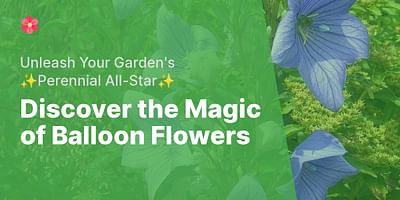Vaughn is a seasoned horticulturist boasting a comprehensive education in botany. His career spans a myriad of roles in renowned botanical gardens and nurseries, earning him extensive expertise in perennial plants. When not immersed in his plant-filled world, Vaughn indulges in birdwatching and nurturing his photography skills.
Plants are classified as annuals, biennials, or perennials based on their lifecycle and how long they live. Understanding these classifications is essential for planning and maintaining a successful garden. Let's dive into each category and explore why plants are classified this way.
Annuals: Annual plants complete their entire lifecycle in a single growing season. They sprout from seeds, grow, flower, produce seeds, and then die, all within one year. Some common examples of annuals include marigolds, petunias, and zinnias.
Annuals are popular among gardeners for several reasons. Firstly, they tend to have a fast growth rate, resulting in quick blooms and vibrant colors. Secondly, annuals provide an opportunity to experiment with different plant varieties and designs each year. Finally, they are often less expensive than perennials, making them a budget-friendly choice.
Biennials: Biennial plants have a two-year lifecycle. During their first year, they grow foliage and establish a strong root system. In the second year, they flower, produce seeds, and then die. Some well-known biennials include foxgloves, hollyhocks, and sweet William.
Biennials require some patience from gardeners, as they don't typically bloom until their second year. However, their stunning flowers and unique growth habit make them worth the wait. To ensure a continuous display of biennial blooms, it's essential to sow seeds or plant new seedlings every year.
Perennials: Perennial plants are the long-lasting stars of the garden. They live for multiple years, often returning year after year, providing beauty and stability to your landscape. Some popular perennial choices include astilbes, hellebores, hostas, and ornamental grasses.
Perennials offer numerous advantages for gardeners. Firstly, they require less maintenance than annuals or biennials since they don't need to be replanted each year. Secondly, perennials often have deep root systems, making them more drought-tolerant and resilient. Lastly, they can provide year-round interest with their foliage, flowers, or attractive seed heads.
It's important to note that not all perennials live forever. Some may have a lifespan of a few years, while others can thrive for decades. Additionally, some perennials may go dormant during the winter months and re-emerge in the spring. Understanding the specific needs and characteristics of each perennial plant is crucial for successful care and maintenance.
In conclusion, plants are classified as annuals, biennials, or perennials based on their lifecycle and lifespan. Annuals complete their lifecycle in one year, biennials in two years, and perennials live for multiple years. Each category offers unique benefits and considerations for gardeners. By incorporating a mix of annuals, biennials, and perennials into your garden, you can create a diverse and beautiful landscape that changes and evolves over time.















